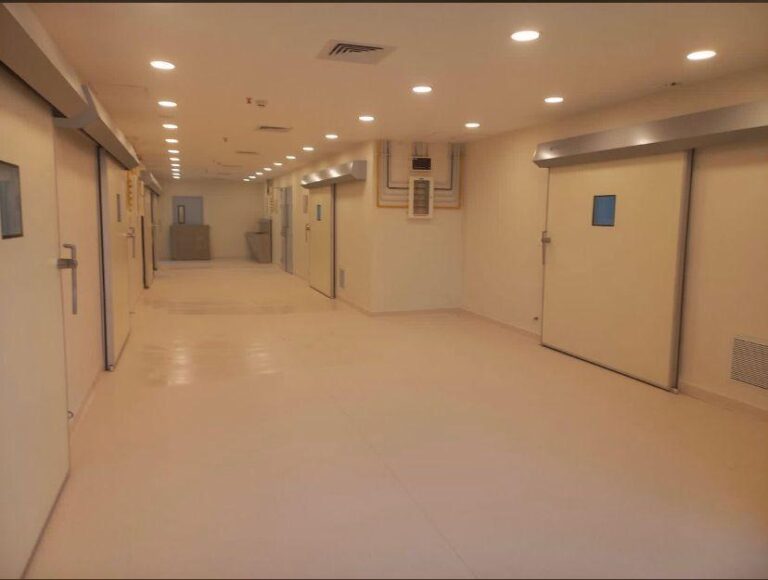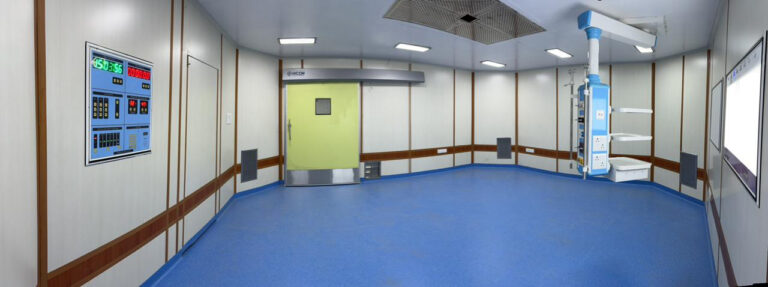In the pharmaceutical industry, maintaining a contamination-free environment is crucial for ensuring product safety and regulatory compliance. One of the most important components of a clean room is its doors, which serve as a barrier to airborne particles, microbes, and environmental pollutants. The choice of materials used in pharmaceutical clean room doors plays a vital role in maintaining hygiene, durability, and efficiency.
Advancements in material technology have led to the development of innovative door solutions that meet the highest industry standards. This blog explores some of the cutting-edge materials used in pharmaceutical clean room doors and their benefits.
1. Stainless Steel – Strength and Hygiene
Stainless steel is one of the most widely used materials in pharmaceutical clean room doors due to its exceptional strength, corrosion resistance, and ease of cleaning.
Benefits:
- Resistant to rust and chemical damage
- Non-porous surface prevents bacterial growth
- Durable and long-lasting
- Easy to sanitize with disinfectants
Clean room doors made from stainless steel are ideal for pharmaceutical facilities where strict hygiene protocols must be maintained.
2. High-Pressure Laminate (HPL) – Aesthetic and Functional
High-Pressure Laminate (HPL) is a composite material made by pressing multiple layers of resin-infused kraft paper under high pressure and heat. HPL is commonly used for pharmaceutical clean room doors due to its balance of aesthetics and performance.
Benefits:
- Smooth, non-porous surface for easy cleaning
- Resistant to moisture, chemicals, and scratches
- Available in various colors and finishes
- Lightweight yet durable
HPL doors offer a modern appearance while maintaining the stringent hygiene standards required in pharmaceutical environments.
3. Polyvinyl Chloride (PVC) – Cost-Effective and Lightweight
PVC is a popular choice for pharmaceutical clean room doors due to its affordability, lightweight nature, and excellent resistance to chemicals and moisture.
Benefits:
- Cost-effective alternative to metal doors
- Resistant to bacterial contamination
- Low maintenance and easy to install
- Available in anti-static and fire-resistant variants
PVC doors are commonly used in areas where lightweight and flexible door solutions are required.
4. Powder-Coated Aluminum – Corrosion-Resistant and Lightweight
Powder-coated aluminum doors provide a durable, corrosion-resistant surface that is ideal for clean room environments. The powder coating enhances the door’s strength while maintaining a smooth, easy-to-clean finish.
Benefits:
- Lightweight yet sturdy construction
- Resistant to corrosion and wear
- Available in custom colors and finishes
- Smooth surface prevents dirt accumulation
Aluminum doors with antimicrobial coatings further improve hygiene levels in pharmaceutical clean rooms.
5. Fiberglass Reinforced Plastic (FRP) – High Impact Resistance
FRP doors are engineered for environments that require exceptional durability and resistance to impact, moisture, and harsh chemicals.
Benefits:
- High resistance to chemicals, moisture, and bacteria
- Non-porous surface for easy cleaning
- Excellent impact resistance for high-traffic areas
- Available in seamless, one-piece designs
Pharmaceutical facilities with heavy foot traffic or areas exposed to harsh cleaning agents benefit greatly from FRP doors.
6. Glass Panels – Transparency and Controlled Visibility
While glass is not typically used for full clean room doors, it is often integrated into door designs for controlled visibility. Clean room doors with glass panels allow for monitoring operations while maintaining the sterile environment.
Benefits:
- Scratch-resistant and easy to clean
- Enhances visibility without compromising hygiene
- Can be reinforced with anti-microbial coatings
- Available in tempered or laminated variants for added safety
Glass panels are often combined with other materials like stainless steel or aluminum to create hybrid clean room doors.
Conclusion
Choosing the right materials for pharmaceutical clean room doors is essential for ensuring hygiene, durability, and compliance with regulatory standards. Stainless steel, HPL, PVC, powder-coated aluminum, FRP, and glass are among the top materials used in modern clean room door solutions. Each material offers unique advantages, and selecting the best option depends on the specific requirements of the pharmaceutical facility.
At HIKOM International LLP, we provide high-quality pharmaceutical clean room doors made from innovative materials to meet industry standards. Contact us today to find the perfect clean room door solution for your needs!


